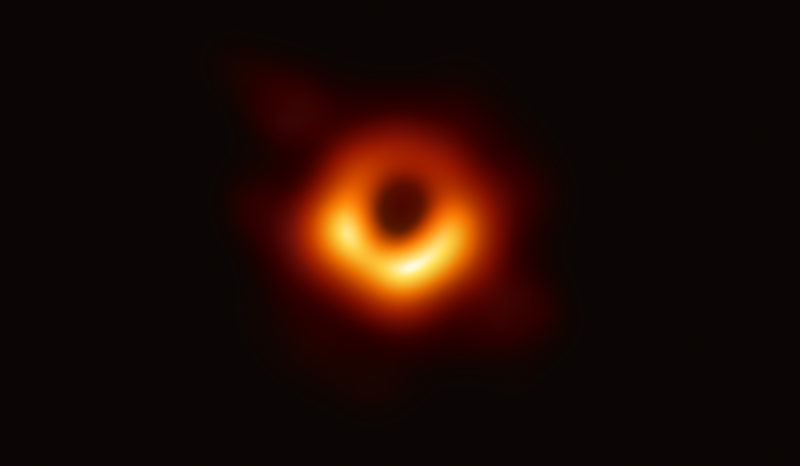In April 2019, the world witnessed a groundbreaking scientific achievement that captured the imagination of millions—a direct image of a black hole, the most mysterious and enigmatic objects in the universe. This monumental accomplishment was made possible by the Event Horizon Telescope (EHT), a global collaboration of astronomers and observatories spanning the globe. In this article, we will explore the fascinating journey of the EHT project, its technological innovations, and the profound insights gained from imaging a black hole’s event horizon for the first time.
The Quest to Image a Black Hole
Black holes are regions in space where gravity is so strong that nothing, not even light, can escape their grasp. Despite their significance in astrophysics and our understanding of the universe, black holes have remained elusive and enigmatic, existing as invisible cosmic entities inferred from their gravitational effects on surrounding matter.
- Theoretical Predictions: Albert Einstein’s general theory of relativity, formulated over a century ago, predicted the existence of black holes as regions of space-time curvature where gravity becomes infinitely strong. However, the direct detection and imaging of a black hole’s event horizon remained a formidable challenge due to their extreme distance and compact size.
- Advancements in Technology: Over the decades, advances in telescope technology, computational algorithms, and data processing techniques paved the way for ambitious projects aimed at imaging black holes. The development of Very Long Baseline Interferometry (VLBI) and millimeter-wave telescopes provided the tools needed to capture high-resolution images of distant astronomical objects with unprecedented precision.
The Birth of the Event Horizon Telescope
The Event Horizon Telescope project began with a vision to create a virtual Earth-sized telescope capable of capturing detailed images of black holes and probing the fundamental physics of extreme gravity.
- Global Collaboration: The EHT project brought together a global network of radio telescopes and observatories, including facilities in North America, Europe, Asia, and Antarctica. By synchronizing and combining data from multiple telescopes, the EHT achieved an angular resolution equivalent to reading a newspaper in New York from a café in Paris.
- Technological Innovations: The EHT’s success relied on cutting-edge technologies and innovations, including atomic clocks for precise time synchronization, high-speed data recorders, and advanced imaging algorithms. These technological breakthroughs enabled the EHT to capture and process petabytes of data, revealing the shadow of a supermassive black hole at the heart of the M87 galaxy.
Capturing the First Image of a Black Hole
On April 10, 2019, the EHT collaboration unveiled the first-ever image of a black hole, capturing the shadow of the supermassive black hole at the center of the M87 galaxy, located 55 million light-years from Earth.
- The Black Hole’s Shadow: The image revealed a bright ring of emission surrounding a dark central region—the black hole’s shadow cast by its event horizon. This iconic image provided direct evidence of the existence of black holes and confirmed predictions of Einstein’s general relativity in extreme gravitational environments.
- Scientific Insights: The EHT’s observations of the M87 black hole provided valuable insights into black hole physics, accretion processes, and the dynamics of extreme gravity. The data revealed the black hole’s mass, spin, and the structure of its surrounding accretion disk, offering new avenues for testing theoretical models and understanding the behavior of matter under extreme conditions.
The Legacy of the Event Horizon Telescope
The EHT’s groundbreaking achievement marked a new era in astrophysics, opening new frontiers in black hole research, gravitational physics, and the study of extreme cosmic phenomena.
- Black Hole Astrophysics: The EHT’s observations have revolutionized our understanding of black hole dynamics, jet formation, and the interaction between black holes and their galactic environments. Future EHT observations aim to image the black hole at the center of our Milky Way galaxy, Sagittarius A*, and explore its properties in unprecedented detail.
- Gravitational Wave Astronomy: The success of the EHT complements the groundbreaking detections of gravitational waves by LIGO and Virgo observatories, providing complementary insights into black hole mergers, cosmic collisions, and the nature of gravity in extreme environments.
- Educational and Inspirational Impact: The EHT’s achievements have captivated the public’s imagination, inspiring curiosity, wonder, and a renewed passion for science and exploration. The project’s success underscores the power of collaboration, innovation, and perseverance in pushing the boundaries of human knowledge and understanding.
Conclusion
The Event Horizon Telescope’s historic imaging of a black hole’s event horizon represents a monumental achievement in astrophysics, pushing the boundaries of observational astronomy and unveiling the mysteries of one of the universe’s most enigmatic objects.
As we continue to explore, study, and unlock the secrets of black holes and the cosmos, the EHT’s legacy serves as a testament to human ingenuity, curiosity, and the relentless pursuit of knowledge. Through collaboration, innovation, and a shared passion for discovery, we continue to push the frontiers of science, inspiring future generations to explore, question, and marvel at the awe-inspiring wonders of the universe that surrounds us in the vast cosmic tapestry of space and time.
Read More: Coinbase Aims to Escalate Core Issue in U.S. SEC Case to Higher Court
